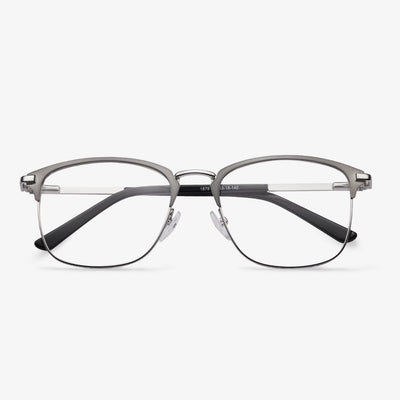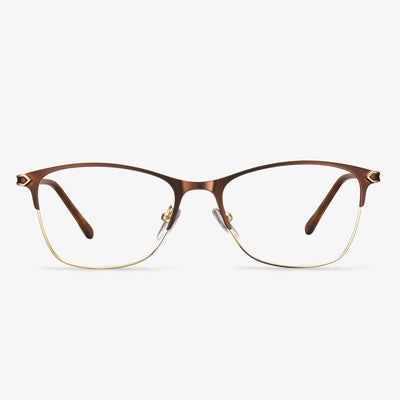Discoloration time and fading time for color-changing lenses
In general, color-changing lenses take about 30 seconds to 1 minute to darken on average when exposed to sunlight/UV and will continue to darken for about 10 minutes to reach the lens depth of full-color sunglasses. Color-changing lenses of good quality and workmanship are restored to an almost clear and transparent state in 2 minutes and completely cleared in 5 minutes, although the high temperature can affect this. If you want to change a single color change lens, the color of the old and new lenses will be inconsistent. This is because the discoloration performance of the old lens will be reduced due to the long-term use of the discoloration agent. Therefore, in order to ensure the normal use and aesthetic appearance, it is usually recommended to replace the two lenses at the same time.
Clean Glasses Properly
If the glasses are dirty, don't just wipe them with other cloth. If you use some hard cloth to wipe, it is easy to cause scratches in the lens. Generally speaking, the following cleaning methods are all feasible.
1. Use neutral or alkaline cleaning agent. Remember, toothpaste cannot be used as a substitute for the cleaning agent for spectacle lenses. General optical shops also sell lens cleaners in small bottles, which are easy to carry.
2. Go to the optical shop for professional ultrasonic cleaning. General optical shops provide free cleaning services. The ultrasonic cleaning machine can fully clean every gap and groove of the glasses.
3. Rinse the lens with tap water. Hold the frame in one hand and the cleaner in the other hand. Rub it slowly against the lens, and then rinse it off with clean water. Then wipe it with a glasses cloth or let it dry naturally.
In addition to the glasses cannot be cleaned with alcohol, you should also pay attention to their placement for daily maintenance. Try to avoid putting it under high temperature, and avoid oily, smoke, etc. If you don't use them, put them in the glasses case.
The function of eyeglasses cloth
Under a powerful microscope, the fibers of the cloth are more closely arranged than those of ordinary cloth, and the material itself is softer than ordinary cloth. That's because eyeglasses under the eye are almost always coated, with each standard lens having seven layers of different functions on the front and back surfaces, to extend lens life. It can thoroughly remove the stubborn stains left on the lens to make the picture clear. It can clean all kinds of glass, resin, and other materials of glasses, glass mirrors, and other mirror surfaces, remove stains, and grease absorption.
How long will the titanium frame last?
Titanium and titanium alloys are often used to make the most durable frames. Their strength is comparable to that of stainless steel. Medical facilities use titanium to make medical implants such as heart valves, showing just how durable the metal can be in extreme environments. Look at the maintenance between quality and use. Good glasses electroplating after three processes, the first is in the glasses or pure raw materials, plating a layer of an adhesion layer, used to attach the plating color layer. The second is the electroplating color layer. The third one is that after the electroplating color layer, another layer of electroplating protection is transparent. The electroplating of glasses through three processes can ensure that the glasses are not easy to lose color and damage in about 5 years. Now the glasses electroplating basically omits the processing of the last layer of the color protective layer, so the service life is about 3 years.
Can you get prescription glasses for night driving?
It is recommended to choose prescription night driving glasses with an anti-reflective coating.When you're driving at night, you'll encounter several bright light sources, including the car's headlights, taillights, and street lights. These light sources can be a distraction for any driver, but especially for those with eye problems. The light reflected from these light sources can cause these drivers to temporarily lose sight of the road, which can lead to many unfortunate situations. As a result, the anti-reflective coating protects your eyes from nighttime brightness and daytime UV damage. The coating on the glass prevents the reflection of these light sources, allowing you to better focus on what's happening in front of your car. Meanwhile, prescription glasses with an anti-reflective coating can reduce glare and improve vision. Whatever prescription glasses you choose for night driving, make sure they have an anti-reflective coating.
Your glasses are not symmetrical.
If one side of the frame looks higher than the other, you need to adjust the arm. If the right side is higher than the left, gently bend the left arm at the hinge or where the arm bends behind the ear. If the left side is higher than the right, gently bend the right arm at the hinge or where the arm bends behind the ear. Adjusting the frames a little at a time may damage your glasses. Place your arms in warm water to make them easier to adjust. Use only warm water from the tap. Don't use boiled water! Because it affects the coating on the lens. If one adjustment is not in place, it can be adjusted several times, and the above methods can be comprehensively used. If the adjustment is really bad, then you have to go to the optical shop to ask the staff to adjust.
Difference between green film and blue film
In addition to the usual hardening, anti-fouling, anti-reflection, anti-radiation, and other functions, the green film has remarkable anti-ultraviolet performance, suitable for people who work outdoors for a long time to use. In addition to the general hardening, anti-fouling, anti-reflection, and anti-ultraviolet functions, blue film’s anti-radiation ability is very good, and it is suitable for computer workers and other people affected by radiation greater.
The coated lenses were originally produced in green, mainly to distinguish them from the uncoated lenses. At 515 nm, the reflection increases the reflectivity by about 2%, so there is a contrast, and the green film is seen in the reflection. This film is the most standard anti-reflective film, and it is the best and oldest one available.











































